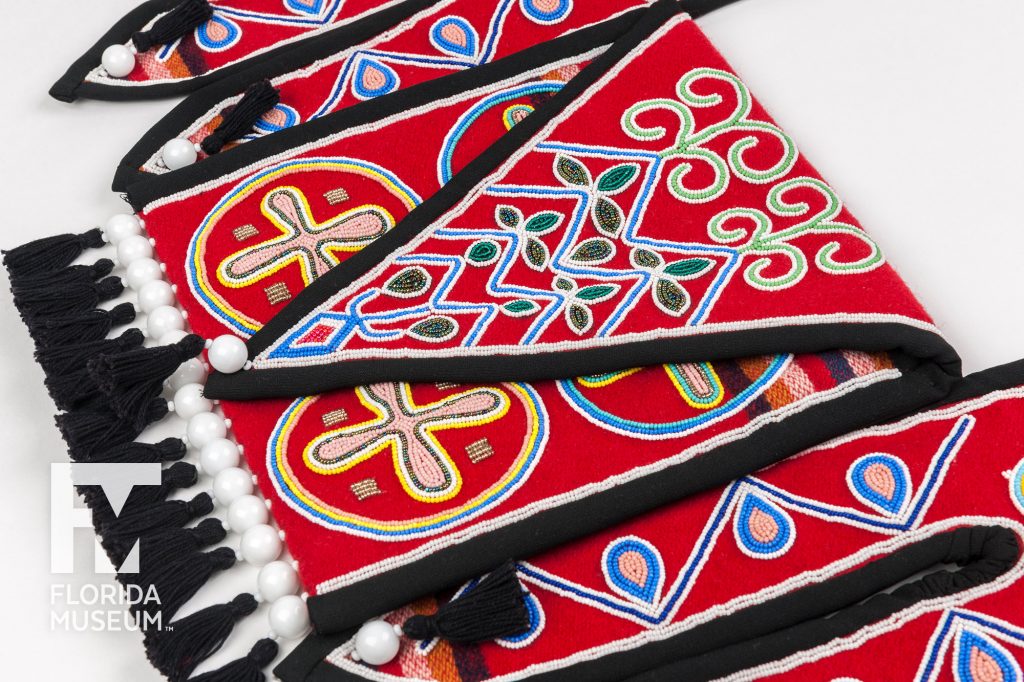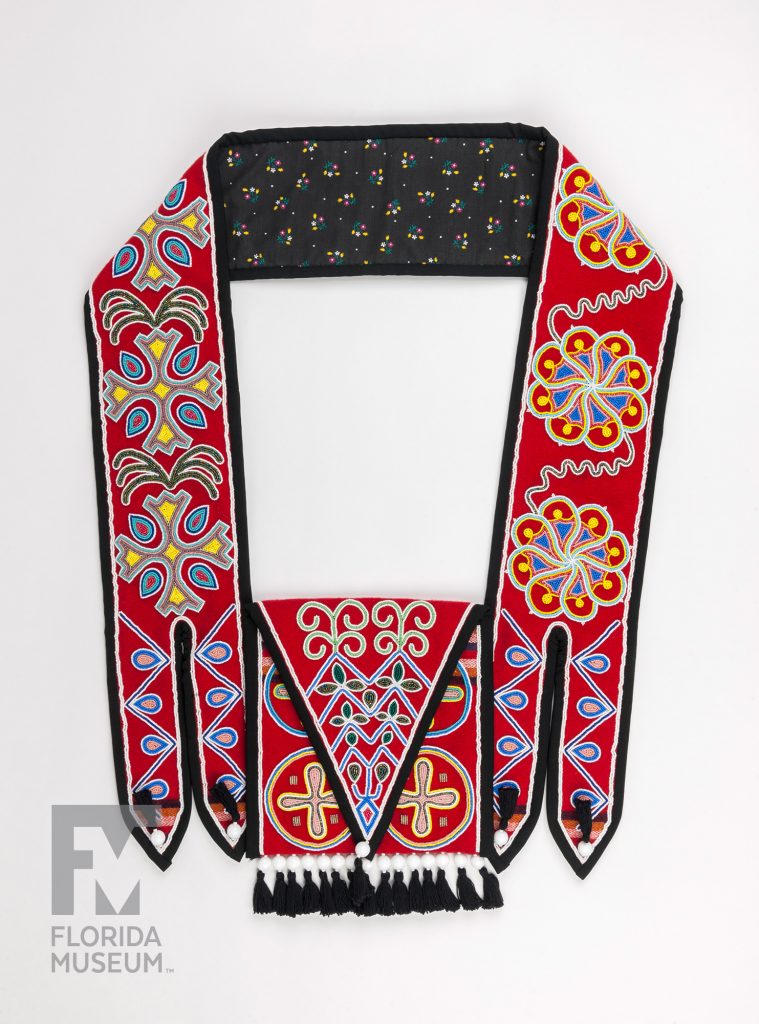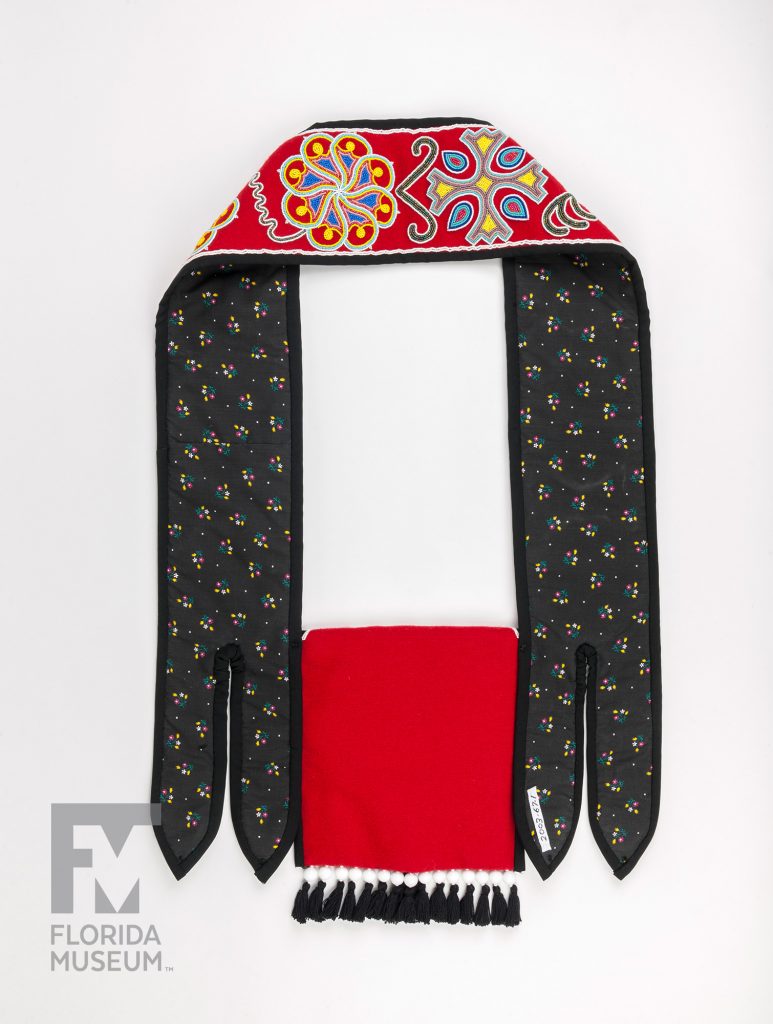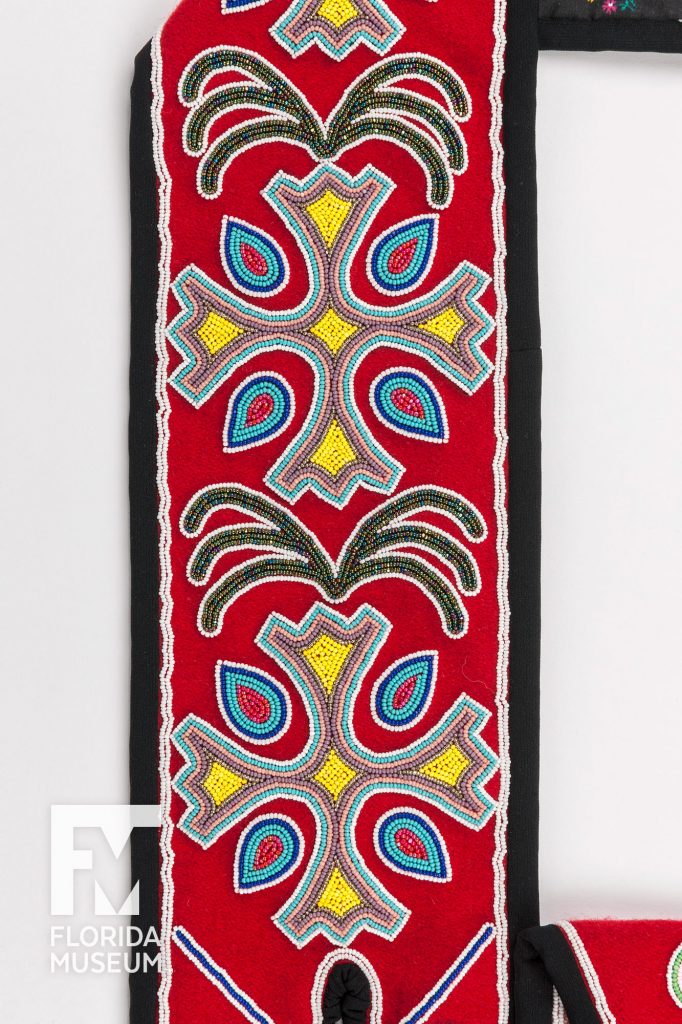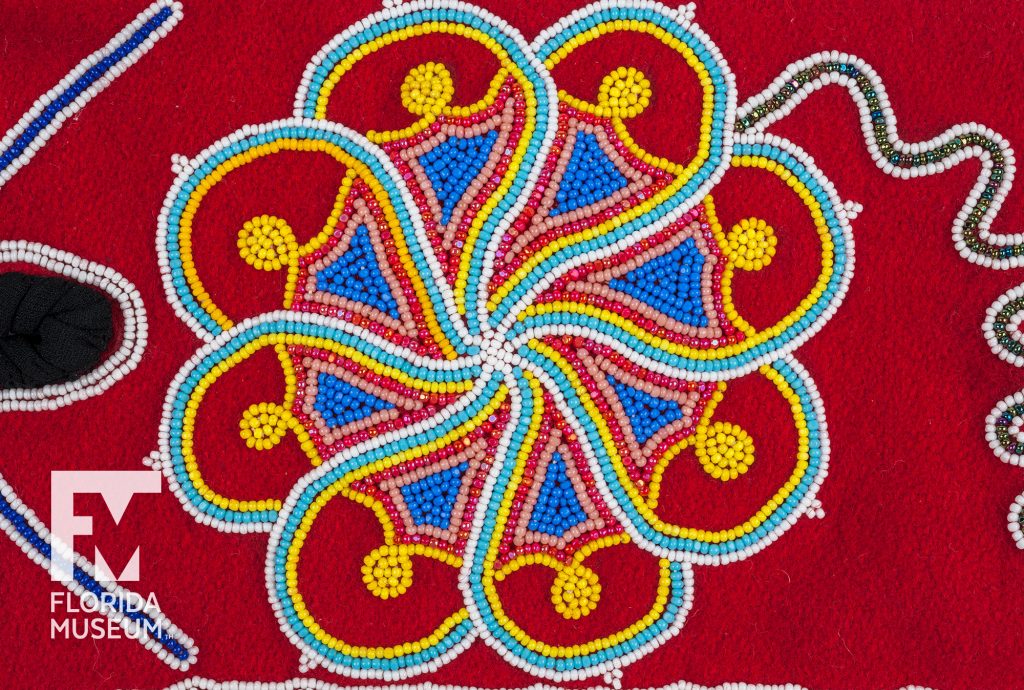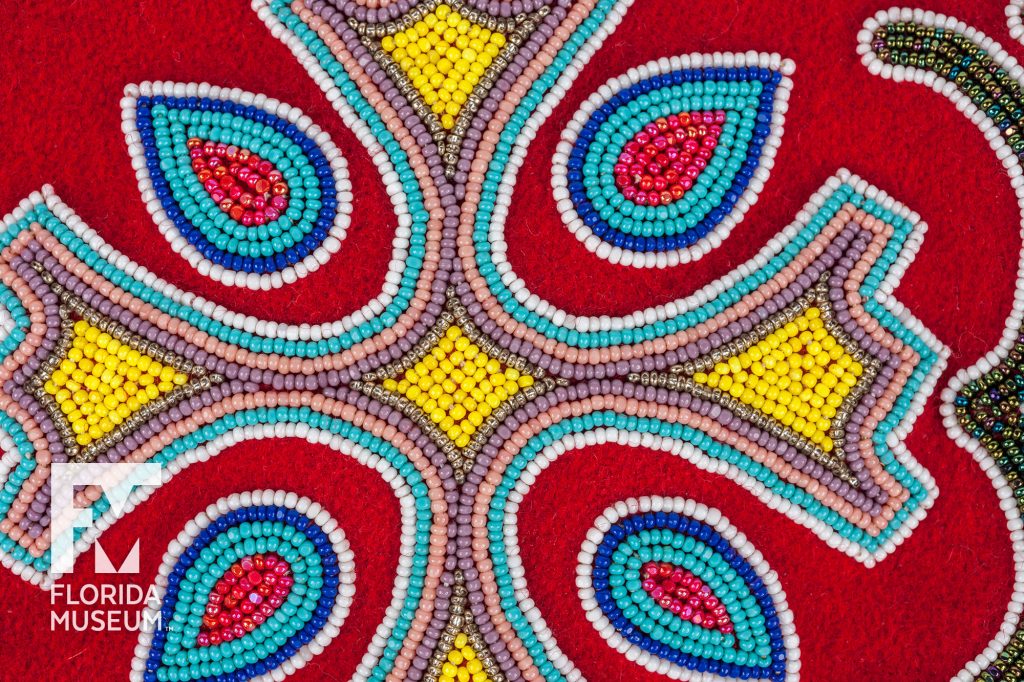During the 1800s many Southeastern native men wore shoulder bags made of wool cloth with elaborate designs of embroidered beadwork. Seminole artist Jay McGirt made this modern bag based on historical examples but with his own unique designs.
Summary
Seminole Shoulder Bag
Made by artist Damian Jay McGirt, Seminole, Oklahoma
Dates to 2003
Collection
Story
These beaded shoulder bags are sometimes called “bandolier bags.” A bandolier is a wide belt that soldiers wear over their shoulder with a pocket for ammunition that rests on the opposite hip. These shoulder bags were made by Indian people in the Great Plains as well as throughout the Southeast.
Seminole men carried numerous things in their pouches such as tobacco, flint and steel for making fires, and sometimes a whetstone for sharpening knives. The bags are usually made of wool and are beautifully decorated with many small beads. The Indians obtained the wool and beads from trading posts.
Different Indian tribes make their beaded bags in different ways. In the Southeastern United States, beadwork is typically curvilinear and makes use of negative space – in other words, the beads do not cover the entire surface. Some of the Seminole designs represent clans, some represent animals, others have other meanings.
Bill Marquardt
Curator, South Florida Archaeology & Ethnography*
Director, Randell Research Center*
Florida Museum of Natural History
Exhibit
On display Sept. 23, 2017-Jan. 7, 2018, Rare, Beautiful & Fascinating: 100 Years @FloridaMuseum celebrated the Museum’s rich history. Each Museum collection was asked to contribute its most interesting items and share the stories that make them special. Though the physical exhibit is closed, this companion website remains online, providing an opportunity to experience the Florida Museum’s most treasured specimens.
Exhibit Area: Objects Tell Stories
Theme: Beautiful Artistry
 Want to see more? Explore more than 300 breathtaking color photos of plants, animals, fossils and cultural heritage materials from the Florida Museum of Natural History’s collections in the award-winning book All Things Beautiful available from the University Press of Florida.
Want to see more? Explore more than 300 breathtaking color photos of plants, animals, fossils and cultural heritage materials from the Florida Museum of Natural History’s collections in the award-winning book All Things Beautiful available from the University Press of Florida.
*This title was accurate at the time the exhibit was on display in 2017. Please visit the collection website to verify current staff and student information.
